
Congratulations to the winners of the Innovation in Digital Banking Awards 2020 – all have illustrated the art of the possible in digital banking.
Undoubtedly 2020 has been a year of great change, as millions of employees and customers around the world had to make a dramatic shift from the office to home working, and commerce has been driven even further into the digital realm. Many have commented that new things – whether products, services or ways of working – that would have taken months or years to implement under normal circumstances, or even regarded as impossible, were realised in days or weeks due to pressing necessity.
During the rapid restructuring of everyday life, it has become obvious that the resources that banks across the globe have invested in digitally transforming their businesses from top to bottom over the past decade has paid off during the Covid-19 crisis. Impressively, most of the submissions for this year’s awards included new products and services aimed at responding to client needs – whether retail customers, small and medium-sized enterprises, corporates or institutions – during the global lockdown.
And while we can’t claim to have had a premonition, The Banker team did exhibit some foresight at the beginning of the year when we decided to rename our popular Tech Projects Awards to the Innovation in Digital Banking Awards, which we thought better reflected what was happening across the industry. After years of the digital transformation category receiving the most entries from across the world, we were keen to dig deeper into developments and innovations happening on a regional level – as well as reward regional pioneers.
What has become clear over the years is that enterprise digital transformation is not a piecemeal endeavour – it is a wholesale and fundamental shift in mindset, as well as technology. And those institutions that are truly innovative and want to stay competitive in the future have been transforming their workforce as well as their tech stack.
We did, however, retain a few of the most popular project categories, including artificial intelligence/robotics, mobile channel and payments, which always garnered a sizeable volume of submissions in previous years. We also kept the fintech partnership category and added another for technology joint ventures.
One observable trend is that most submissions, even in specific project categories, have broken down the technology silos and combined many emerging technologies, such as artificial intelligence, blockchain and smart contracts, data analytics and open application programming interfaces. Cloud technology is underpinning the exponential explosion in innovation – which is nothing new for fintechs, but it is beginning to permeate all areas of the incumbent banks, which are starting to reap the efficiency and reduced time-to-market rewards.
Collaboration is another dominant theme, with most submissions listing both big tech and fintech partners. In-house development is still happening, but many banks are leveraging the power of multiple best-in-class fintech solutions that can be quickly tailored to their needs.
We would like to take this opportunity to thank our independent panel of judges for their enthusiasm and indefatigable efforts. It’s a tough job and we appreciate your diligence.
JUDGES

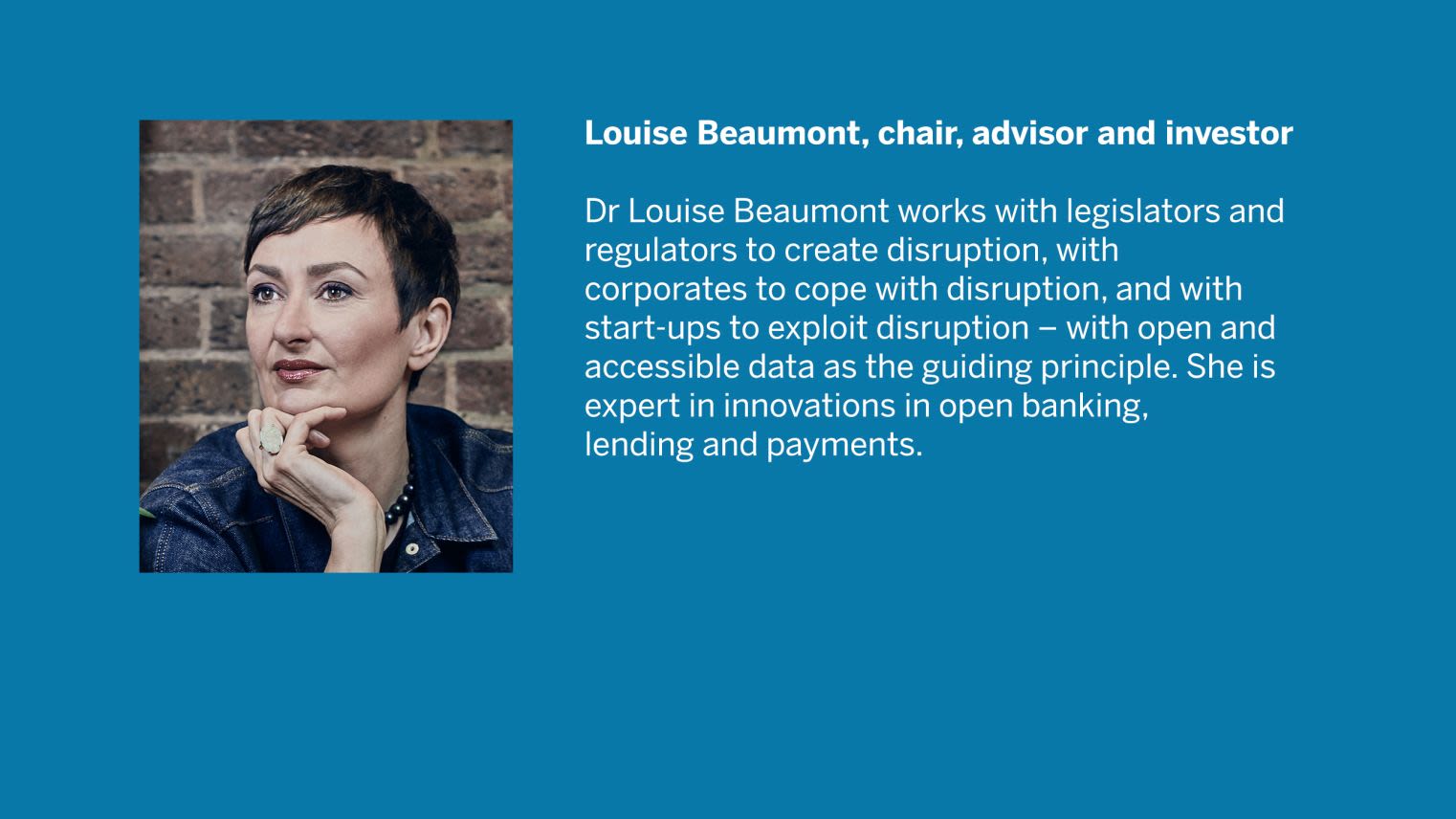
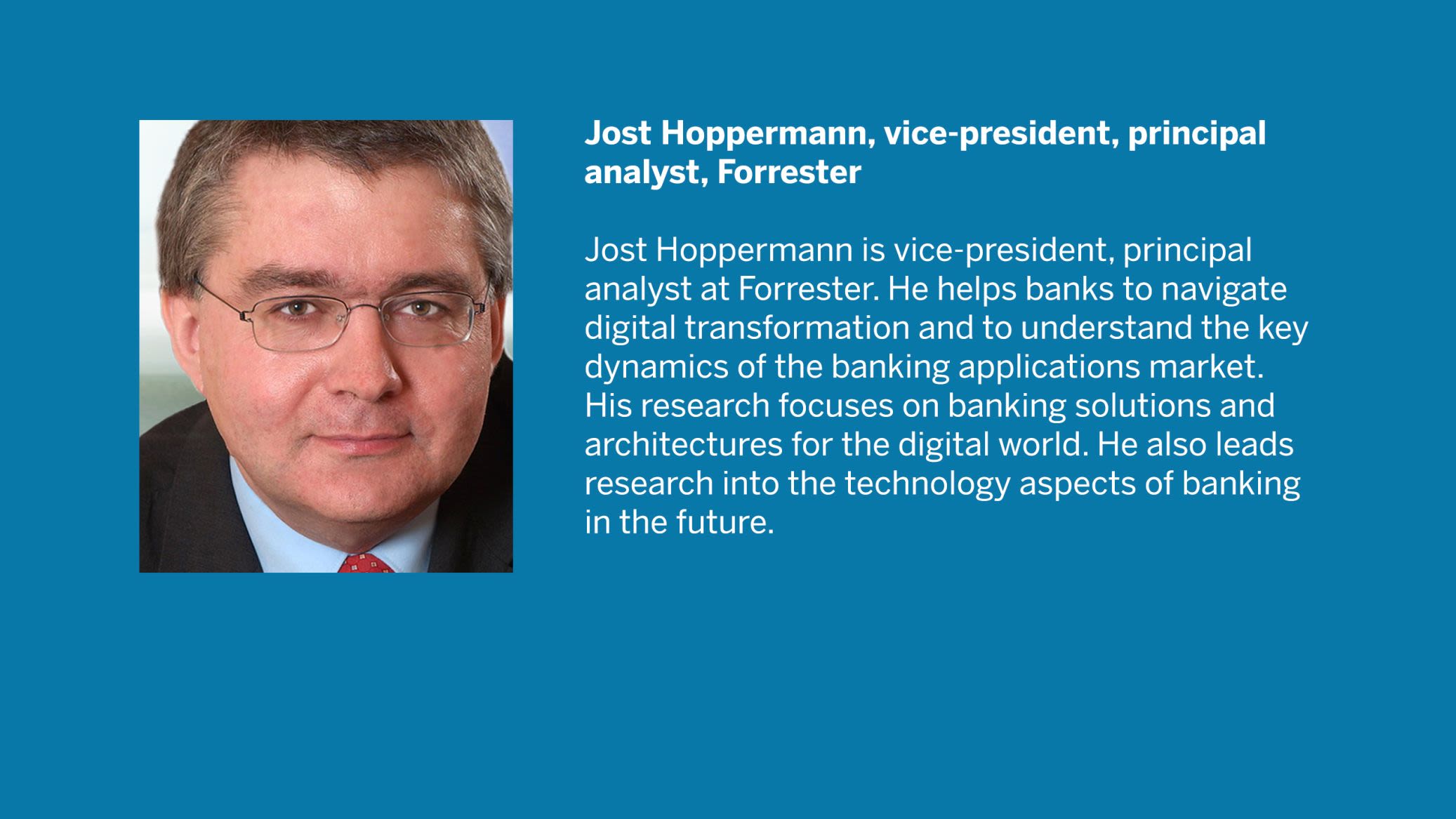


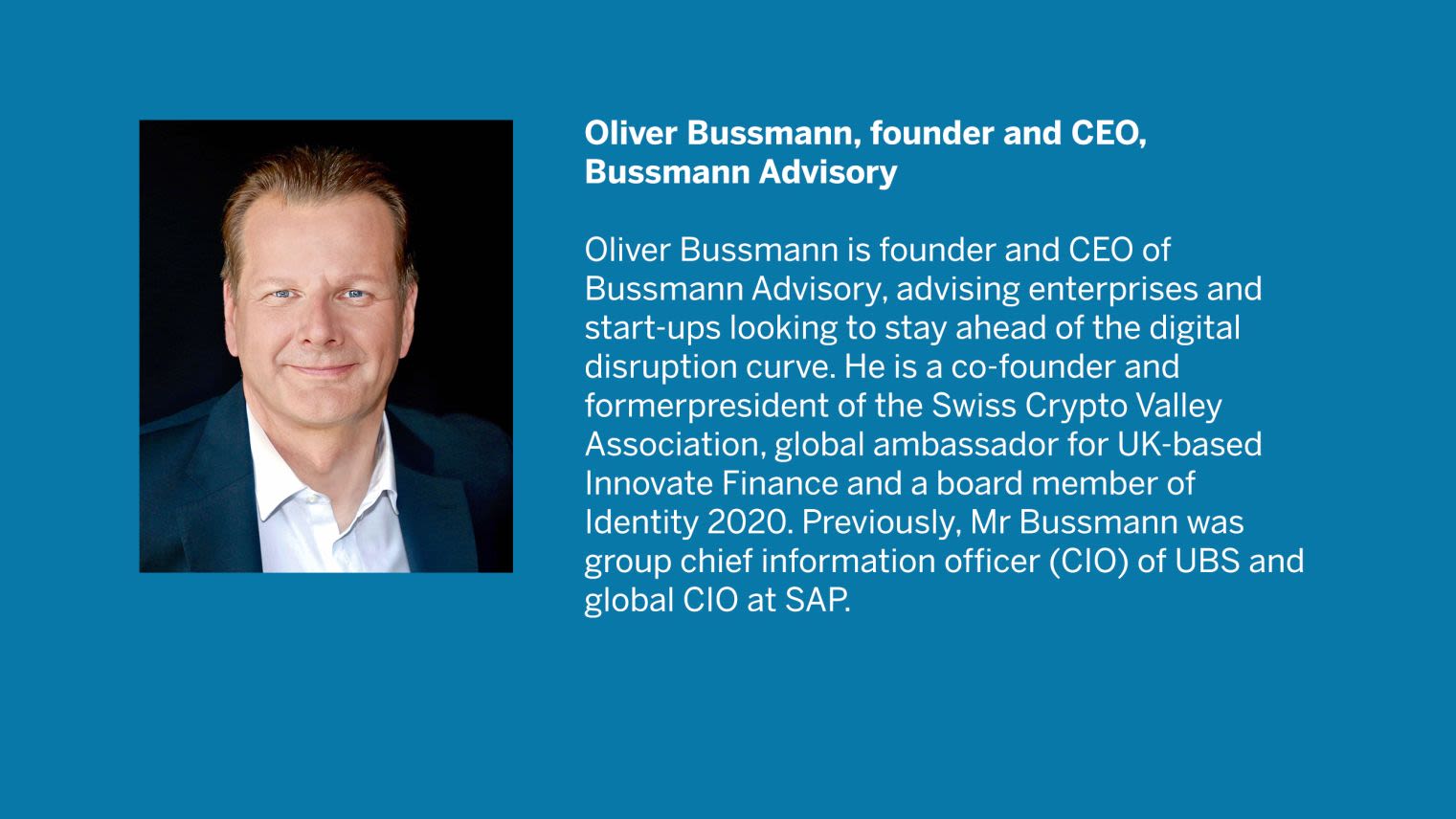
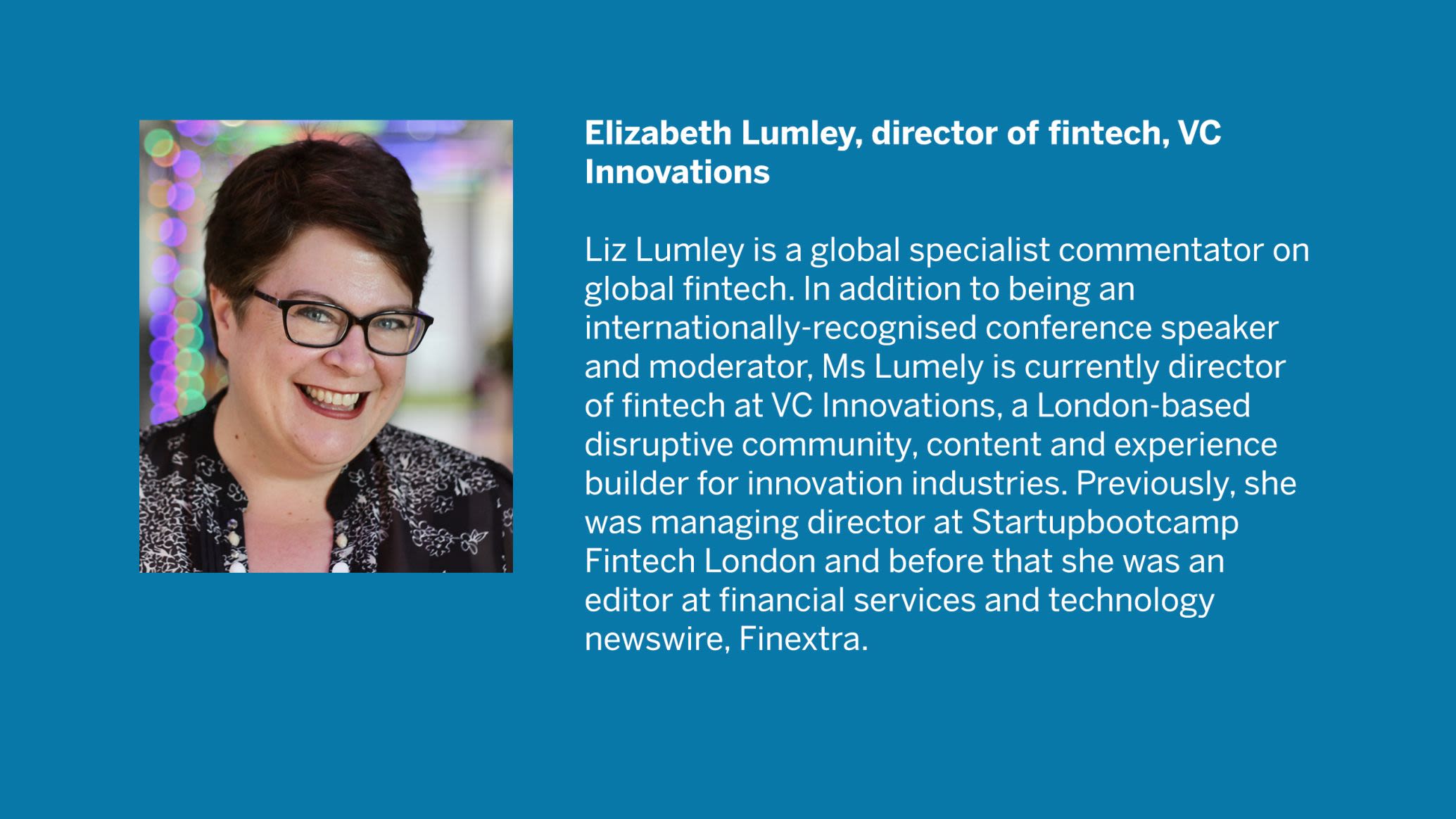


WINNERS

GLOBAL/EUROPE
BBVA, a renowned leader in digital banking, took the 2020 accolade for the most innovative bank in the world and Europe. The success of the Spanish lender’s digital transformation strategy is demonstrated in its results, launches and key performance indicators.
“BBVA’s digital transformation is about enabling people to bank where, when and how they like, but also to ensure that we help them understand their finances and data in a way that adds real value to their lives,” says David Puente, BBVA’s global head of client solutions. “However, none of this would be possible without incredible teamwork, the use of technology, and the platforms and systems we have been building and which are now allowing us to deliver this goal.”
During the review period, BBVA announced a set of priorities intended to continue the transformation process. These priorities are underpinned and powered by digital technology and the strategic, permissioned, and risk-controlled use of data, and include improving clients’ financial health and helping their transition towards a sustainable future.
One of the core digital strategies BBVA has focused on has been continuing to develop its global operating model. Three areas to highlight during the past year have involved the launching and development of global platforms.
First is the launch of BBVA’s global cloud platform, Ether, deployed in August 2019. Ether supports the bank’s community of 12,000 developers to deliver end-to-end business solutions faster and work as a global team. It provides them with a common infrastructure, architecture, security and automation stack to help them build either front, back or data components quickly.
Over the past five years, BBVA’s transactional volumes have grown between two and two-and-a-half times across different geographies. Ether has not only been able to absorb this new demand but has also kept costs flat throughout this transformation.
The platform runs on both in BBVA’s private data centres in Spain and Mexico, as well as on public cloud services like Amazon Web Services and Google Cloud Platform. By rebuilding some of core applications in Ether, the bank has managed to move a number of critical workloads away from the mainframe and into the cloud.
Ether gives developers new capabilities not found on legacy stacks, including: big data and artificial intelligence compute capacity; providing global architectures to build channels like web, mobile, contact centres and even branches quickly; enabling an end-to-end security model across multiple platforms and countries, as well as new methods like biometry and online on-boarding; and providing an end-to-end automation stack from process orchestration, centralised document management and digital signatures.
The platform has also helped the bank launch two talent development initiatives in the past year: Tech University, which has reskilled more than 3000 employees, and Ninja Academy, a self-service learning platform where engineers can decide which training will best complement their core skills.
Another area where BBVA has led banking transformation in recent years, especially in Europe, has been around open banking and has been providing access to the bank’s application programming interfaces (APIs) to third parties since 2017. In the past year, the bank has unified its API offering, enabling global and local partnerships through one global platform – the BBVA API_Market.
BBVA took the lead among its peers in launching products in a third-party app when it launched a partnership with Uber in July 2019. Uber’s partner drivers and their families can open a new BBVA bank account directly through the Uber app and benefit from the Uber Driver Partner credit card, which gives them discounts on fuel and other discounts Uber strikes on their behalf. By using BBVA’s Instant Pay API, drivers also receive their earnings within minutes into their bank account.
In Europe, BBVA also began offering point of sale (POS) financing for retailers in Spain. By enabling POS devices to connect into the bank through APIs, retailers can instantly offer customers access to up to €1500 credit – subject to a credit worthiness check – on the spot, with biometrics and two-factor authentication used to confirm the customer’s identity. The bank was also able to support Alipay customers in Spain (Alipay), allowing businesses in the country to offer this payment system to Chinese tourists.
Using biometric technology, in August 2019 BBVA became the first bank in Spain to offer fully digital enrolment to potential customers. From October last year, more than 650,000 companies using the Spanish government-issued digital administrators’ certificate were also able to register to become BBVA Spain customers in the same way.
Through its use of agile delivery and higher level of automation, BBVA reports a 70% reduction in the delivery time for new products. And due to its distributed cloud platform and new testing capabilities, it is now seeing an 80% reduction in errors.
AFRICA

“At Standard Bank, we believe that the time is right to re-imagine transaction banking, further catalysed by the current economic crisis,” says Hasan Khan, head of transactional banking services for Standard Bank Group. “And we believe that by leveraging digitisation, by leveraging data, by improving our team’s experiences, we will help our corporate clients realise their potential.”
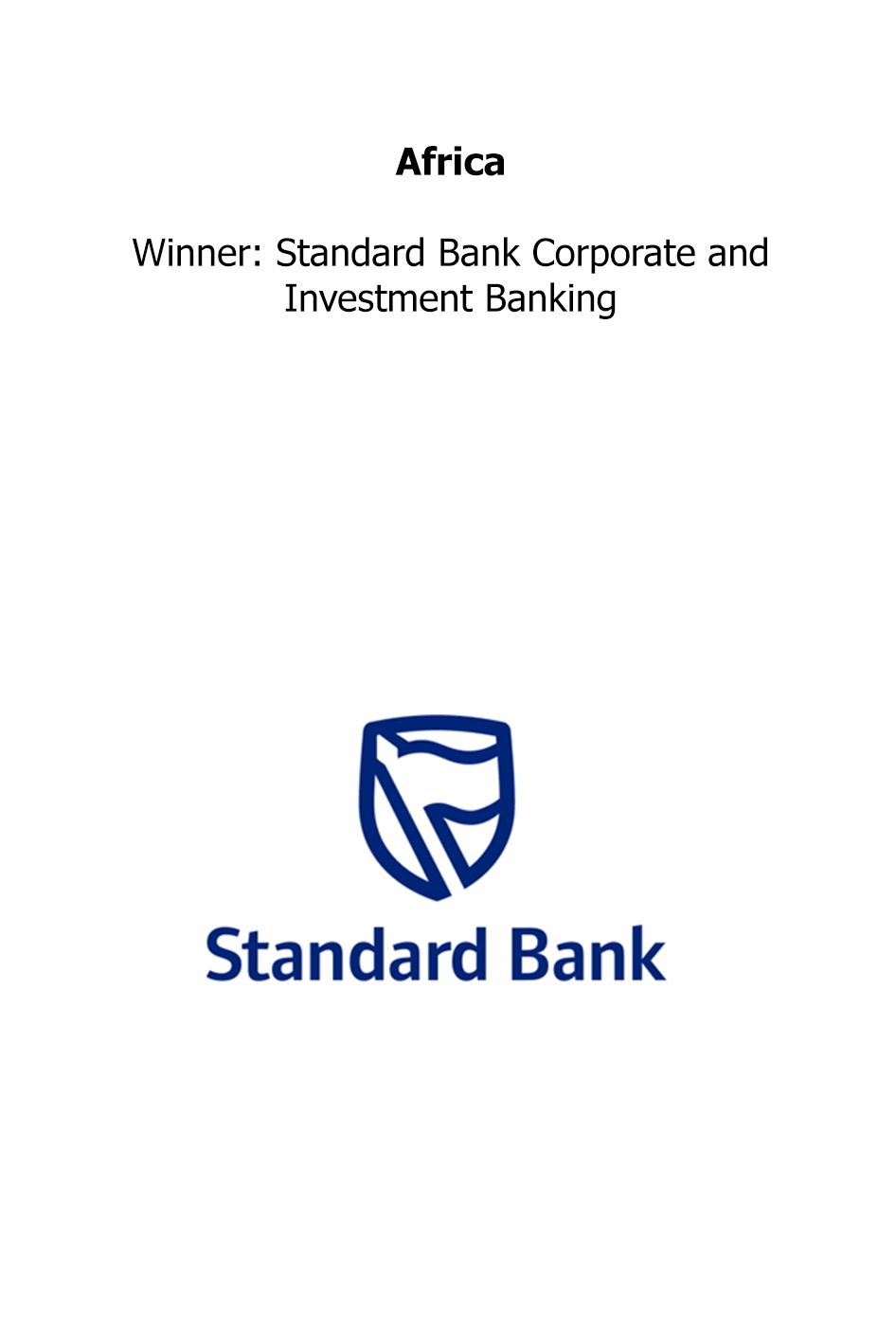
The South African lender’s decision to disrupt itself through its Programme Quantum Leap clinched it the award for the Best Bank in Africa for Innovation in Digital Banking.
In 2019, a small team was set up in an innovation lab situated separately from the bank’s corporate premises. The team members were to base their thinking as a fresh entrant, unencumbered by any existing constraints, embrace advancements in technical architectures and partner with clients to understand their aspirations.
In order to break free of its legacy technology architecture, the first venture of Programme Quantum Leap was to design and build a platform using a first-principles approach and re-imagining architecture based on micro-services, cloud, application programming interfaces, and open source, as well as engaging third-party service providers.
This approach has allowed for a materially faster and lower build cost of client experiences. The team assembled and deployed both the Quantum Leap platform and its first proposition, QuantumTrade, within 14 weeks of the venture inception – a fraction of the time it would have taken for a typical bank within a legacy environment.
QuantumTrade is an online platform for clients to instruct the bank to issue domestic guarantees and import letters of credit using a process that is digitised from application to issuance. The end-to-end processing time has been reduced from days to an average of just 25 minutes.
Predictive due diligence checks are completed before application submission, leveraging the bank’s understanding of its clients and their supply chains. Additionally, online, real-time status tracker allows clients to see the status of their application.
Since its launch, Standard Bank has released incremental features every two weeks, ensuring that client feedback is incorporated into the solution.
The bank provided several testimonials from its clients, including one from CMC Motors: “It’s been a very good experience throughout, as the bank has partnered with us in creating this. [Standard Bank] has revolutionised how we do things. It has served us well, especially during this Covid-19 lockdown period.”

ASIA-PACIFIC
HSBC beat out several innovative regional peers to scoop the Innovation in Digital Banking accolade for Asia-Pacific due to its mobile-first digital strategy, single technology platform and global code approach. The bank’s overarching vision for digital banking has allowed it to respond quickly to customer needs as a result of Covid-19.
“Our vision is simple: we want to put more of the bank in our customers’ pockets, blended with the power of our people, so we can support our customers in the best possible way,” says Charles Allen, global head of mobile and smart channels, and regional head of digital business Asia-Pacific. “We’re confident the work we’re doing today with digital will deliver higher customer satisfaction and faster growth at a lower cost to serve.”
In 2019/2020, HSBC embarked on a second phase of its multi-year digital banking strategy. After establishing a strong foundational code base, the bank launched new country-specific mobile apps to optimise and deliver consistency in user experience, catering to size and diversity of its customer base across Asia-Pacific, while efficiently delivering local variants to ensure that they meet customers’ needs. With a “single stack, multi-app” approach, the bank has maximised code reuse, as well as reduced development and delivery time.
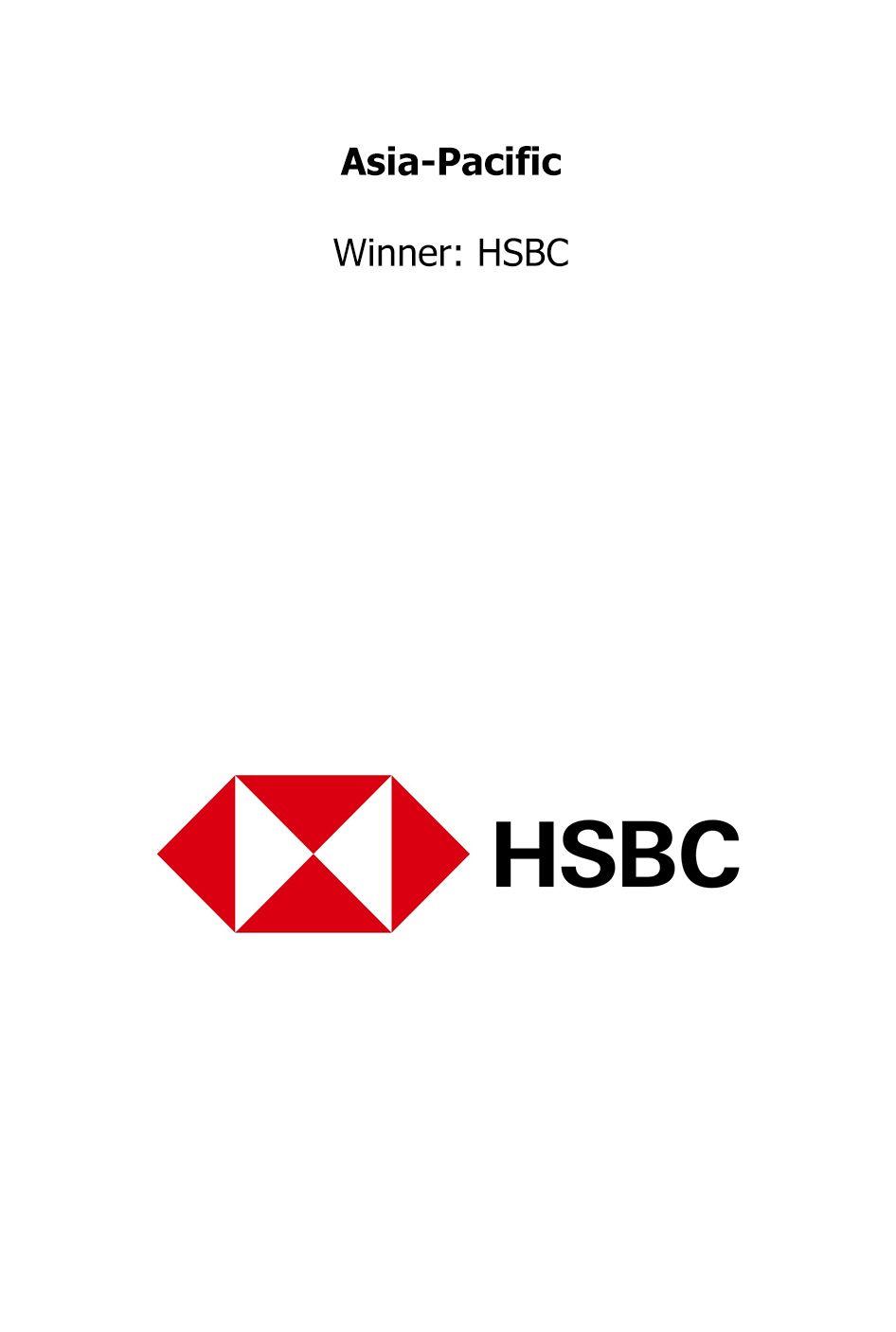
Within Asia, HSBC has launched mobile apps in six markets – Australia, India, Malaysia, Singapore, Taiwan and Vietnam – and it enhanced more than 20 major features and delivered these to markets efficiently by reusing global components. These include biometrics log-in with optional PIN entry, digital card activation, instalment payments set up digitally, new product digital onboarding with pre-filled forms, and more.
Gaining an edge on the big Chinese banks is not easy, but HSBC has become the first foreign bank to enable smart mobile onboarding journey for a main account in mainland China. New retail customers only need to spend 10 minutes to sign up on HSBC China Mobile Banking or WeChat Banking. The bank reports a 30%-50% reduction in in-branch account openings, helping to accelerate the moved to digital platforms under the current Covid-19 situation.
HSBC has also matured and updated its delivery model to take advantage of its economies of scale. The Philippines and Sri Lanka are the first two markets to go live with Amazon Web Services for customer on-boarding/approval journeys. The bank uses Jumio, an AI-powered identity and verification solution, and credit data integration, enabling an instant decision in principle.
CENTRAL AND EASTERN EUROPE
Sberbank, which scooped the central and eastern Europe regional honour, is continuing the process of transforming its technology stack and developing innovative solutions that integrate artificial intelligence (AI) and robotics, machine learning, blockchain, application programming interfaces (APIs) and other technologies. The Russian lender is also investing in the development and popularisation of emerging technologies on a countrywide scale.
In 2019/20, Sberbank has continued to focus on client experience by expanding its range of banking and non-banking services. It has developed a seamless navigation between services in its digital business ecosystem, Sberbank Ecosystem. Linked by the bank’s internally developed ‘Fintech API’, it has integrated more than 40 partners into the ecosystem, with activities and interests spanning food delivery, taxi services, digital healthcare, neuroscience and much more.
The bank relaunched the API in mid-2019, incorporated it into its online bank, Sberbank Business Online, and made it available for every corporate client, which can use the technology to deliver a better user experience. A client can apply for the API in the online bank, without having to visit a branch, signing all necessary papers with an e-signature.
Clients can use test and production areas, such as the sandbox Sberbank deployed with Swagger. With the help of this debugging environment, developers can simulate the business process and get the result without writing the code. After integrating with bank API, the client can view detailed information on the service and usage statistics, such as payment collection methods for subscriptions.
The bank has also launched personalisation functionality in Sberbank Online, the bank’s app for retail customers, to help them find necessary services up to three to five times quicker. The app adapts the interface for each of the bank’s 57 million customers using AI algorithms which analyse customer preferences based on 1,000 parameters and suggest widgets with the most relevant actions on top of the main screen of the app.
For example, if a customer pays their utility bills at the beginning of the month, the relevant widget will pop up at this time.
In addition, at the beginning of 2020 Sberbank released the Navigator Platform, which is a dashboard, data visualisation and data analysis tool. Developed in-house, the omni-channel platform is based on open-source solutions, best practices and has a user-friendly interface. Top management, middle management and analysts can trace analytical data from aggregate level to detailed view of every client, transaction and operation in just a few clicks.
The judges were also impressed with the bank's roll out of algorithmic execution in Sberbank Markets, its cloud billing platform BRIS and biometric authentication at its ATMs. Alexander Vedyakhin, first deputy chairman of the executive board at Sberbank, says: “Sberbank strives to deliver a unique user experience while pro-actively introducing modern information technologies into its operations. Our goal is to make sure that the customers using our services could do what they need quickly and be satisfied with the results. This is exactly what biometric scanners in ATMs, the BRIS Utilities platform, and algorithmic orders inside Sberbank Markets are for. And we are pleased that the benefits of these services have been recognised by both our customers and acknowledged global experts.”
LATIN AMERICA
Banco Bradesco believes that continual innovation in its daily decisions and operations will ensure the bank remains relevant for the financial system, and for society as a whole, by satisfying different customer profiles.
“Our goal is to put Bradesco in the position of being the first bank for our clients, offering the best services through physical and digital channels, and providing a simplified, practical and secure journey,” says Walkiria Schirrmeister Marchetti, executive managing director, Banco Bradesco.
The Brazilian lender’s digital banking strategy is focused on three areas. First, its innovation is tied into making new products, services and technologies which simplify customers’ lives available on its digital channels. In 2019, 96% of customers’ transactions were through digital channels.
Bradesco’s innovation hub, Inovabra, fosters collaboration with employees, business functions, clients, companies, start-ups, technology partners, investors and mentors. Inovabra is engaged with 1800 registered start-ups, more than 190 residents’ start-ups and 92 large corporates in its physical space called Habitat and has a private equity fund of R$400m ($70m).
Over the awards review period, the bank improved its multi-platform digital assistant, Bradesco Artificial Intelligence (BIA), by launching voice-based wire transfers between Bradesco accounts using the app, which contributes to a frictionless customer journey. The bank has also rolled out a contextual credit offering, which considers customer requirements during specific life events.
Second, it is focused on its native digital bank, called ‘next’, which applies user experience design, intelligent customer journeys and predictive algorithms for a better experience, anticipating user actions and suggesting financial solutions. It is designed as a hub to connect with other digital platforms.
In 2019, Bradesco expanded next’s hub of connections, including a recent deal with a large cosmetics company which has created a new business model that offers a range of benefits to beauty consultants, including access to a free digital bank account and a mobile credit card machine.
The third area of focus is open banking. While the regulatory framework is still under construction in Brazil, Bradesco sees open banking as an opportunity to establish external partnerships to offer new products and serve new niche markets. Its proposal of “bank-as-a-service” creates a hub of connections and new lines of business/segments. The bank has already implemented two initiatives aligned to this model: next, which distributes non-financial products (perks) to customers; and Portal MEI, which provides business solutions for individual micro-entrepreneurs.
NORTH AMERICA
“Several years ago, we committed to becoming a leader in digital banking and made significant and focused investments to achieve our objective,” says Brian Porter, president and chief executive officer, Scotiabank. “This recognition as the most innovative bank in North America is evidence that our investments and efforts were the right ones for our bank, our customers, our shareholders, and our employees.”
Scotiabank pursues a single digital strategy across its five key markets (Canada, Mexico, Chile, Peru and Colombia), which aims to leverage data and analytics to offer the right products at the right time, strengthen the bank financially and provide customers with an unparalleled digital experience. After laying the technology foundation, the bank pivoted in 2019/20 to accelerate its digital transformation.
This has meant that its design, data analytics, product, and engineering teams could step up during the Covid-19 pandemic, delivering solutions — often across borders — that improved the customer experience, provided relief, generated new revenues, and transformed how the bank operates, which also led to savings as transactions migrated to digital channels. Impressively, online transactions spiked in just weeks, rivalling levels previously seen for entire years.
The Canadian bank’s strategy of having digital factories in each of its core markets proved especially effective. Each hub, which house expertise ranging from user experience design and data analytics to mobile app development and DevOps engineering, rapidly developed regional solutions and then shared and reused design patterns and code across borders. In some weeks, Scotiabank released as many as four new customer solutions.
For example, to better understand customers’ financial vulnerability during Covid-19, Scotiabank’s analytics teams built a model to calculate a “vulnerability score” for retail customers. Using this metric, the bank built relief programmes to proactively reach out to the most vulnerable customers and provide tailored financial advice. The concept has been implemented across its Canadian and international banking markets, as well as its digital bank, Tangerine Bank.
Through Scotiabank’s retail and Tangerine businesses, the bank has provided financial relief to more than 315,000 customers, with most of these efforts deployed through digital channels. In the Pacific Alliance countries, the bank processed 2.5 million customer assistance programme applications in record time, 80% of them digitally.
MIDDLE EAST
The Commercial Bank – Qatar has become a trailblazer in digital innovation in the region, effectively leveraging its technology teams and leading fintechs.
To further accelerate its digital transformation, the bank established the Commercial Bank Innovation Services (CBIS), an independent research and development company. With operational, technology and client capabilities all under one roof, CBIS has developed a model that will enable an exponential increase in the volume of digital transactions and generate new offerings.
Commercial Bank’s retail banking business has been revamped, with an emphasis on providing speedy, secure and attractive transaction propositions to customers. These services have taken on added significance in light of the current Covid-19 pandemic.
For example, the bank launched its “60-second Remittance” service, which allows customers to transfer funds internationally to more than 30 countries. Using a network of correspondent banks and fintech, the funds are received by beneficiaries from within 60 seconds to one business day. In 2019, the bank processed 1.5 million international funds transfers, compared to 200,000 in 2016.
In January 2020, Commercial Bank launched CB Pay, a digital wallet based on the bank’s ‘Tap N’ Pay’ contactless payment functionality and remote e-commerce payment using Masterpass checkout. CB Pay allows cardholders to pay for items in stores quickly – and securely through tokenisation – using mobile phones. They can also use CB Pay when shopping online and manage their cards using the CBQ Mobile application. Additionally, Commercial Bank launched the CB Fawri programme in October 2019, which made instant discounts available to cardholders at a wide variety of partner merchant outlets.
More recently, Commercial Bank responded to foreign workers’ need to transfer money abroad during the Covid-19 pandemic, especially as exchange houses closed to stop the spread of the virus. Within 72 hours, the bank launched a digital product called CB Household Worker PayCard, which allows employers to create PayCard accounts for domestic workers in a household, farm or personal office. The employee’s monthly salary is then credited to the card and, if desired, remittances can be set up on their behalf using the bank’s 60-second Remittance service.
“Commercial Bank is committed to digital innovation to enhance the experience of our customers. This award reflects the strength and breadth of our best-in-class digital products and our strategy of investing in innovative technologies. We will continue to introduce new digital innovations that make banking easy, convenient and secure,” says Joseph Abraham, group CEO at Commercial Bank.
AI AND ROBOTICS
In response to several global initiatives that have transformed traditional margin processing, Credit Suisse built a new margin processing platform using natural language processing (NLP), machine learning (ML) and robotic process automation (RPA). The bank realised that greater automation was the only way to cope with the expected exponential rise in the number of daily margin calls due to new regulations. In addition, the bank wanted to address human processing errors and the requirement for several additional control points to reduce operational risk.
“Knowing that the Uncleared Margin Rules would add significant volume and complexity to over-the-counter collateral management, we wanted to implement smart and sustainable automation to give us scale, accuracy and speed,” says Karen Newton, global head of margin, loan operations and EMEA regional offices at Credit Suisse.
Using NLP and ML, the platform processes and classifies emails, determining the counterparty intent and extracting key data elements. Then RPA enters the margin call into the collateral management systems, while an exception process handles complex cases. Unlike traditional rule-based technologies, the ML engine continually learns from experiences using a built-in feedback loop.
As of December 2019, the Swiss bank had fully automated 77% of daily margin processing, and it is expecting a further increase to 90% straight-through processing (STP) through ML and the adoption of neural networks. Impressively, despite a twofold increase in daily margin calls due to market volatility in March 2020, the platform scaled up to meet these volumes over an extended period, without manual intervention or process changes, which allowed Credit Suisse to effectively manage the credit and liquidity risk associated with the market conditions at the time. In addition, it has created capacity within the team to deliver value-added capabilities to both internal and external clients.
The agnostic nature of the solution makes it highly portable, well beyond the financial industry. Within Credit Suisse, the underlying technology solution is already being applied to credit repo for the processing of transaction lifecycle events initiated through client email requests.
As one judge comments: “This innovation is clearly transformative and provides a portable utility solution that can be used in other parts of the bank. With 77% of STP already reached, their next milestone of 90% looks attainable and the full automation of the process is impressive.”
CYBERSECURITY
Keenly aware of the risks posed in cyberspace to its business, reputation and customers, Banco Bradesco decided to re-enforce its cyber defence strategies, not only in IT and security areas but the whole organisation and stakeholders. The Brazilian lender established a Cyber Resilience Programme (CRP), as a broader emergency and crisis management strategic initiative, which integrated all areas in the organisation.
“The realisation of this initiative is to transform the mentality and continue to make all employees aware that cybersecurity is not a computer problem, but a general issue of the organisation, partners and value chain,” says André Rodrigues Cano, executive vice-president, Banco Bradesco.
Launched in 2019, the CRP aims to “align prevention, detection and response capabilities, to mitigate and move on from cyber-attacks, enforcing the organisation business resilience to maintain its core purpose and integrity, protecting its data, applications and IT infrastructure.”
The programme scope entailed: current state analysis; creating the governance and communication strategy; designing the future state model; and testing scenarios in a range of cyber sessions at IBM facilities in Cambridge, MA.
By the end of the project, five cyber-attack scenarios were defined and tested in the IBM X- Force Command Centre, which allowed Bradesco to apply fast improvements on its own cybersecurity crisis management model. It was the first Latin America bank to use IBM’s command centre to simulate a real cyber-attack.
In addition, Bradesco was able to adopt the best available practices in the market provided by IBM’s consultancy, using the expertise of IBM X-Force Threat Intelligence programme among other frameworks, helped to create an acting reference model and cyber crisis scenarios applicable to Bradesco reality.
Bradesco is using artificial/cognitive intelligence to map global threats and vulnerabilities, searching the web, deep web and dark web, as well as using business intelligence to better understand market trends related to cyber and the adjust its cyber strategic direction – these efforts have helped to reduce the number of attacks.
The bank’s innovation platform, Inovabra, was used to work with fintechs and start-ups to discover new security solutions, from technical solutions to behavioural ones. The bank is also working together with the Brazilian central bank and industry association Febraban to implement a cybersecurity programme and best practices with other companies and banks.
“[CRP] scores high on internal alignment and broader industry collaboration and impact,” says one judge. “[The bank] clearly benefited from an improved internal architecture and the plug-ins of fintech solutions.”
DATA
CTBC Bank has experienced a significant increase in online credit card transaction amounts, effectively riding the wave of growing digital payments due to the thriving e-commerce and government promotions. However, the bank also faced increased fraud risk from card-not-present transactions and evolving fraudster modus operandi.
The Taiwanese lender has enhanced its fraud risk management to maintain its competitive advantage, launching the Fraud Risk Intelligent Management (FRIM) project in April 2020 after two years in development. Now the bank can automatically verify suspicious transactions in a more efficient and user-friendly way. It has not only streamlined the fraud detection process but also reduced the potential fraud loss.
FRIM uses internal data, external data and advanced analysis technology to construct a 360-degree view of customer transaction patterns. Thus the bank was able to create tailor-made fraud risk strategies for each customer, which has helped it to improve the accuracy of fraud prevention and reduce transaction friction. It can determine the risk level for each payment and take the appropriate strategy to process it.
As one judge comments: “This fraud management solution is clearly a leading approach in this market. I appreciate the way the bank combined the necessity of real-time fraud management with the convenience for its clients.”
In developing FRIM, CTBC co-operated with SAS Institute to obtain the customer lifecycle dynamic payment information, to evolve the risk management from a transaction level to a customer-centric level.
The bank not only collected payment-related data but also explored the customer’s device information. By co-operating with Cherri Tech, the bank could track each customer’s device fingerprint, which is the interaction between the customer and the device. The device fingerprint can be treated as an authentication of a customer’s identity.
CTBC also adopted an acoustic model to calculate the probability distribution of the customer voice and language to determine the vocabulary with the highest relevance. The bank co-operated with Grandsys to implement deep neural networks to recognise the features of a voice to find out the true meaning of the customer’s expression.
“The FRIM project has not only significantly improved the fraud asset quality for CTBC but it has also streamlined the transaction confirmation process for customers,” says a spokesperson at the bank. “CTBC will keep forging ahead to exploit more data sources to develop model-based fraud prediction mechanisms to continuously enhance the accuracy and efficiency of fraud management.”
MOBILE
Digitalisation and innovation in small and medium-sized enterprise (SME) banking has lagged behind retail banking – until now. Türk Ekonomi Bankası (TEB) won the mobile channel accolade in 2020 for its comprehensive business banking mobile application aimed at micro-businesses, SMEs and corporates, which launched in January 2020.
“Our SME digital banking platform, CEPTETEB ISTE, is designed for business customers to facilitate, assist and accelerate their business life,” says Ali Gökhan Cengiz, assistant general manager, SME banking group, TEB. “We started with deep research on the need analysis and then involved the customers into the production process to shape the solution together to meet their needs effectively.”
The app, which has a dashboard, financial calendar and assets and liabilities pages, allows customers to track their financial status in real time. The dashboard provides consolidated data for all type accounts, foreign exchange/gold/silver accounts, credit cards, funds, cheques and loans, while the financial calendar logs past and future payments.
The Turkish bank reports that SMEs can save time with more than 200 user features, such as a global search engine to find any item. They can take actions easily, replaying previous payments, accessing most frequent/latest transactions, exporting files, managing receivers/suppliers to transfer funds easily, tracking point of sale (POS) devices with merchant functions like real-time turnover, daily and monthly turnover trends, requesting POS materials, and online customer care services.
Approximately 90% of available banking transactions can be made through the platform, according to TEB. Customers prefer digital channels for transactions instead of face-to-face meetings with a relationship manager, especially during the Covid-19 pandemic. The convenience and speed are changing clients’ expectations, and now they are requesting more services on the app.
According to one of the judges: “The specific focus on business customer needs, the co-creation process and the result of enabling business clients to execute 90% of their banking needs via the app is indeed transformative and reflected in the uptake rates.”
Mr Gökhan Cengiz adds: “Business customers need speed, convenience and insights, as well as broader services than core banking functionality. Our customers benefit from the rich set of functionality by managing their money and businesses on the go, save time with the enhanced user experience and can track their financial status in the real time. We will add new integrated services to deliver additional value and meet more needs of these businesses.”
OPEN BANKING
DBS’s open banking submission got a lot of nods from the judges, with many applauding its “invisible bank” concept. “We developed our marketplaces with a focus on convenience, simplicity and personalisation – to effectively make banking invisible for customers,” says Tse Koon Shee, country head, DBS Singapore.
“This was achieved by leveraging our strong data analytics capabilities and advanced modelling techniques to facilitate hyper-personalisation. Our open application programming interface (API) policy enables seamless connectivity with our partners and platforms, allowing a robust ecosystem to be set up with multiple partners at each stage of the customer journey to ensure scalability and agility.”
Since 2017, DBS has launched four marketplaces – travel, property, car and electricity – to seamlessly integrate banking into customers’ everyday lives. In the past year, it has extensively expanded its open banking ecosystem across these marketplaces.
For example, the bank has piloted offering customers exclusive member-only deals when they book with DBS Travel Marketplace from Singapore Airlines to Expedia hotels, facilitated by the bank’s own open banking APIs for payments. In December 2019, it created the ability for customers to split their booking payments into instalments via My Preferred Payment Plan (MP3), enabled by open APIs. In January 2020, DBS onboarded Sabre, linking to more than 40 other airlines partners.
The bank also tailors content, offers and other useful information for the customer’s upcoming trip. Model-driven artificial intelligence ensures that customers only receive relevant messages and services. Through DBS Travel Marketplace, travel-related bank product penetration – multiplier account, general insurance, DBS Altitude card – from booking on the platform grew by more than 15%.
In the property marketplace, DBS enhanced its MyHome planning tool in January 2020, improving user experience, leveraging APIs for logic computation. For example, leveraging partners Urbanzoom and Edgeprop’s APIs, the bank is able to provide an estimation of the value of the customer’s existing property to furnish their home budget. Customers also benefit from contextual advice at timely milestones in their purchase journey.
As one judge says: “The creation of an ecosystem based on different partnerships, operated on the basis of smart data and open APIs is a very interesting model. It clearly puts the customer at the centre and leverages data and API technology to enable a broad open banking proposition – something that the European market should be inspired by.”
PAYMENTS
Standard Chartered Bank’s innovative spirit came to the fore in the design of SCPay, its global payment platform. The platform provides 24/7, real-time payments that are scalable, reliable and secure. It is built on a modern, open source, cloud-native, microservices-based platform, which is flexible to keep up with the fast-changing landscape to meet the time-to-market demands of clients and regulators.
“SCPay was a greenfield development, designed for the cloud, and built on a modern microservice and application programming interface-based architecture. It combines Standard Chartered Bank’s functional experience with modern technology in an all-new experience,” says Dr Michael Gorriz, group chief information officer, Standard Chartered.
Enhancements to the platform were driven by a prestigious client in Hong Kong, which wanted a highly scalable real-time payments solution that could handle vast transaction volumes with round-the-clock availability. The requirement was to scale SCPay up to handle up to 50 times the transaction speed.
Working through 220 sprints, with 12 teams, covering 1000 user stories and a series of exhaustive performance testing, the bank found that the SCPay platform could handle enormous transaction volumes up to 14,000 transactions per second or more in future.
As one awards judge comments: “This global payments platform is leveraging the latest digital technology advances and has been designed with the client at the centre. A very impressive delivery that can be transformational for Standard Chartered’s client base.”
The platform is built on a ‘blue-green’ deployment framework, which provides zero downtime for the client. It offers fully automated straight-through processing of transactions with no manual intervention. It has self-healing bots, which can auto-detect and auto-recover from any exceptions. The bank can also establish priority lanes and highways for processing payments based on the client’s profile.
“SCPay is our response to the rapidly evolving digital payments ecosystem in line with changing client and regulatory needs,” says Natarajan Sriram, global head, cash technology, Standard Chartered.
“By providing client-centric and innovative solutions at speed, SCPay is set to revolutionise the banking experience for our clients and partners by bringing together speed, scale, availability and convenience to handle the exponential [transaction] volume growth which defines the digital economy.”
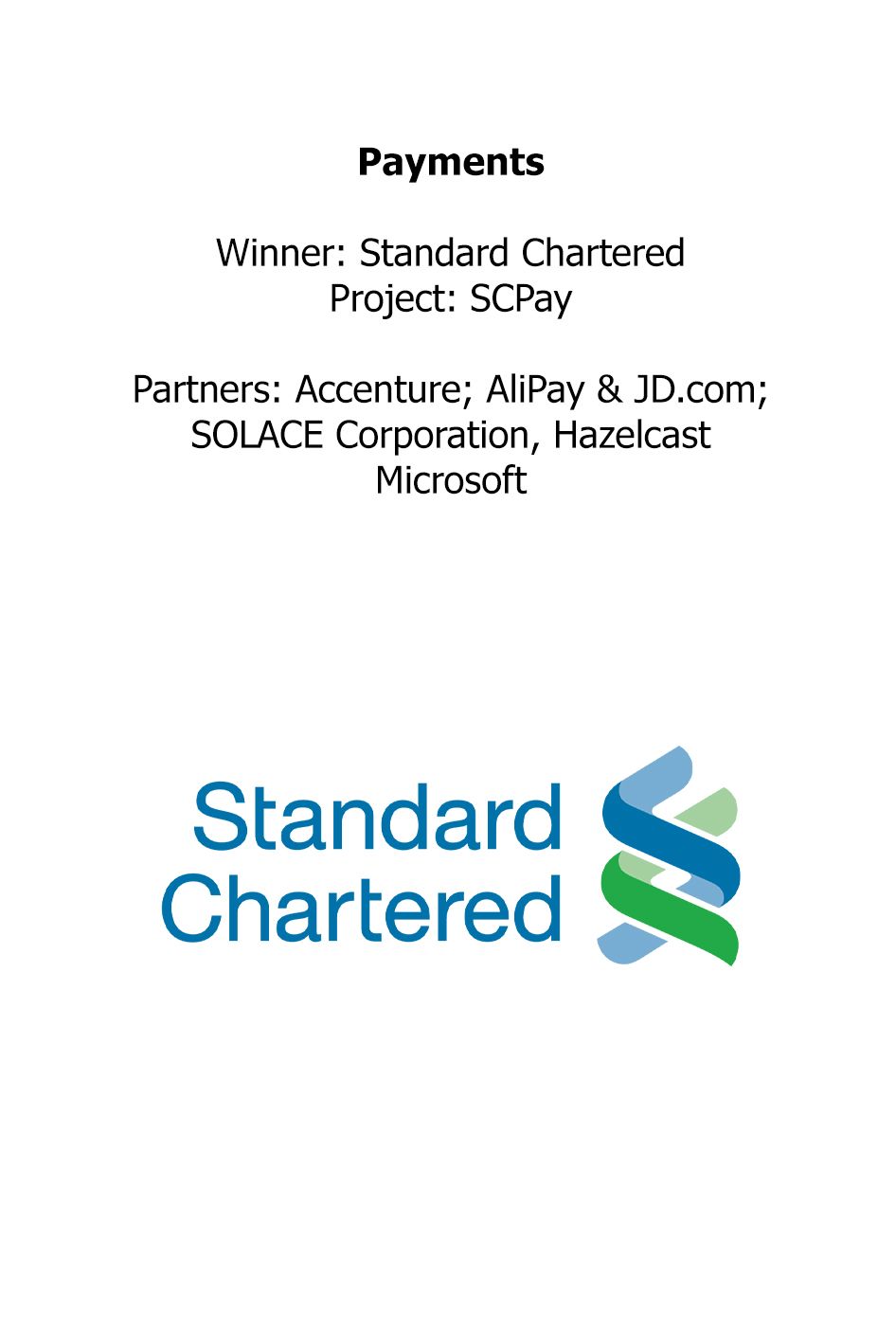
The payments platform has been rolled out in Hong Kong and Singapore for faster payments and direct debits, with more markets planned for the second half of 2020.
TECHNOLOGY JOINT VENTURE
The Spunta Banca DLT is a private permissioned distributed ledger technology (DLT)-based solution for the Italian interbank reconciliation process, called “spunta”, which involves the whole Italian banking sector, Associazione Bancaria Italiana (ABI), its research and innovation centre ABI Lab, plus technology firms R3, SIA and NTT Data. Its transformation potential secured this project the accolade for most innovative technology joint venture.
Historically, the task of identifying and addressing inconsistencies with the multiple parties involved in the spunta process has been hampered by a lack of standardisation, the use of piecemeal and fragmented communication methods, and no single version of the truth.
In March 2020, Spunta Banca DLT went live with 32 Italian banks to implement straight-through processing of interbank reconciliations.
Underpinned by R3’s Corda Enterprise DLT platform, the application improves the governance of the overall spunta process, and moves from lengthy error-prone settlements to real-time management of the reconciliation process.
Transactions are reconciled daily, not monthly as before. In addition, the banks gain full account visibility via a dashboard. Other benefits included the robust, shared automatic matching enabled by the solution and the communication channel integrated into the application. The solution’s smart contract technology also provides banks with automated feedback on their transactions. The results include lower operational risk and faster, more transparent processes, all delivered through a user-friendly interface.
“The traditional reconciliation process for interbank transactions in Italy – formerly governed by the ‘spunta’ process – is notoriously complex. Connecting such a large and diverse group of banks in a live environment to tackle a shared problem is a major milestone for digital transformation in the finance sector, providing a glimpse into a brighter, more efficient and interconnected future for all financial markets,” says Katerina Koutoulaki, associate director, client engagement at R3.
Twenty-three more banks, part of the second wave, have also gone successfully into production since the beginning of May 2020. And a third wave is scheduled in October 2020, with more than 150 Italian banks going live, representing the whole Italian banking sector.
Mario Costantini, CEO and general manager of Neva Finventures, Intesa Sanpaolo, explains Spunta Banca’s potential for market transformation: “We can spread the ecosystem in Italy and use this platform for many different use cases, from syndicated loans to anti-money laundering to know your customer and so on. We will all keep working together to leverage the full potential of this technology.”
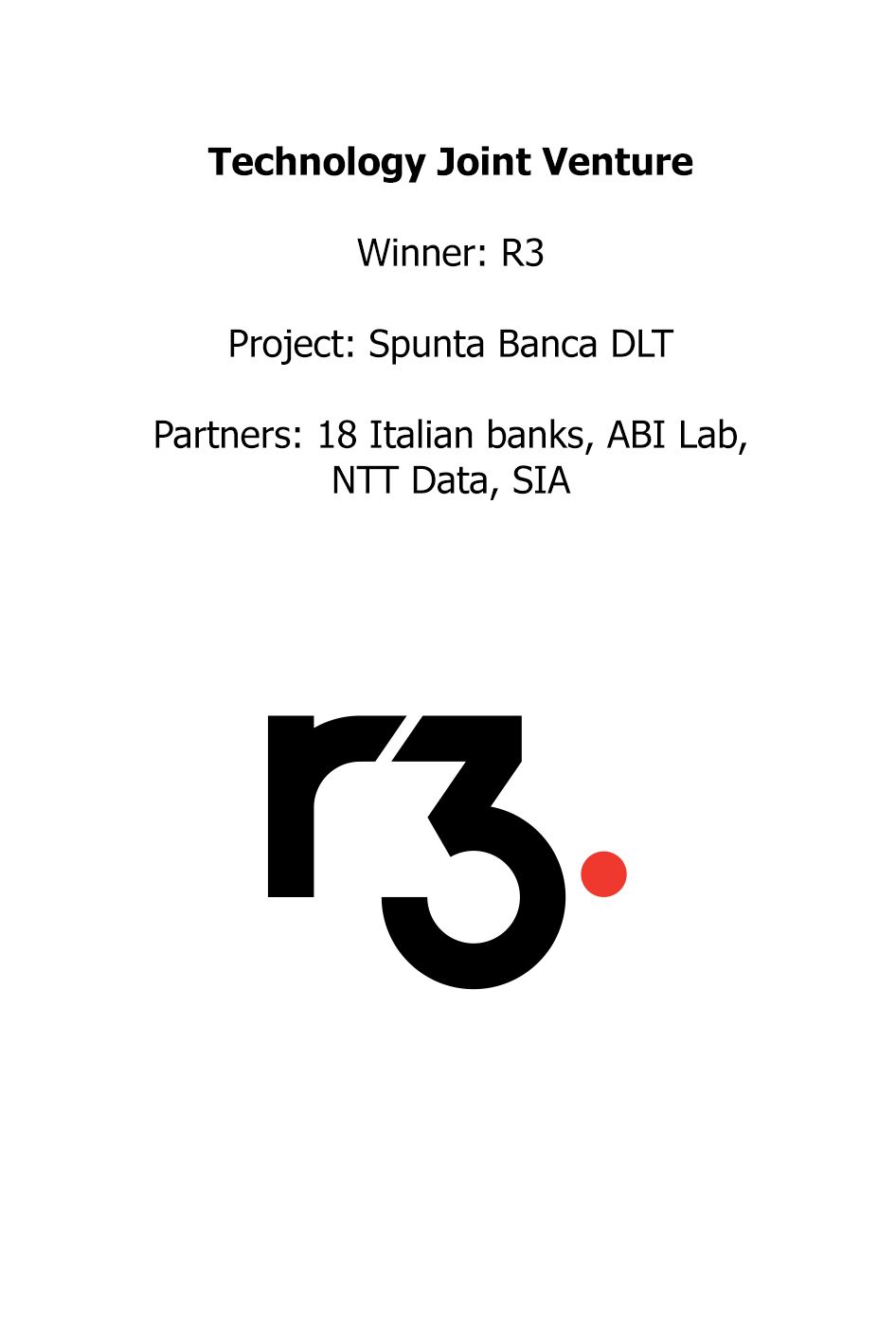
FINTECH PARTNERSHIP
Santander UK’s technology upgrade is a great example of what can be done in partnership with fintechs, such as cloud-banking provider nCino. The UK lender’s commercial business is now based on a modern stack that can be rapidly configured, tested and launch to end users.
In 2019, Santander UK embarked on a transformation project to deliver a cutting-edge experience for its small and medium-sized (SME) customers. It worked with nCino and other technology partners to replace 13 legacy systems and over 60 end-user computing systems with a cloud-based solution, overhauling its SME, commercial and corporate banking units. The bank purposely selected technology firms with innovative propositions and roadmaps that match its aspirations, both for meeting customer expectations and facing disruptive threats.
With the nCino platform, Santander UK has been able to provide its commercial customers with a faster and more transparent onboarding experience, greater efficiencies and a swifter lending decision and fulfilment processes. The transformation project operates under the methodologies of design thinking and agile.
“Santander UK’s digital transformation has had an incredible impact on its business. With the nCino Bank Operating System, [the bank] has improved portfolio management, streamlined workflows and increased transparency, allowing them to focus on being a great bank for their customers,” says Pullen Daniel, executive vice-president and managing director, Europe, the Middle East and Africa, nCino.
Santander UK’s project discovery started in early 2019, and it began designing, building and user-testing in May 2019. By late August, the bank had completed the first phase of the implementation, making Santander UK officially live with onboarding workflows on the nCino platform. The bank continued to roll out additional phases with digitised production and execution of loan contracts/collateral documents going live in November 2019. Despite the recent unprecedented health and economic crisis caused by the Covid-19 pandemic, the bank went live with eight additional integrations and full loan book migration in April 2020.
The bank wanted to move toward cloud-first solutions, using productised tools and integrations where possible. nCino’s Bank Operating System is built on the Salesforce platform, which provides a scalable, flexible and secure solution. The use of nCino and its various integration partners has helped the bank to streamline processes and decrease lead cycle and credit decision times by more than half as a result of increased transparency in onboarding and lending workflows.



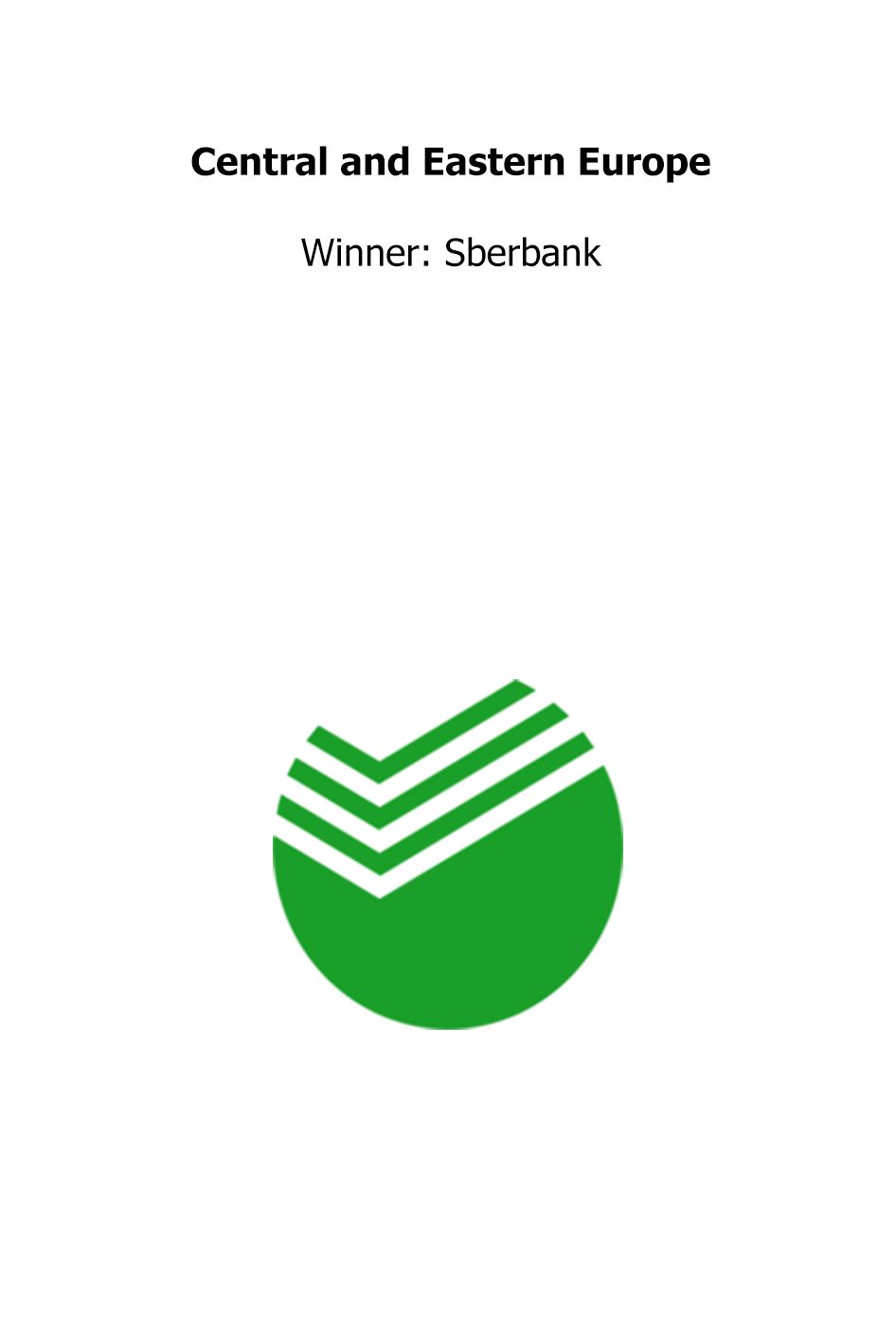
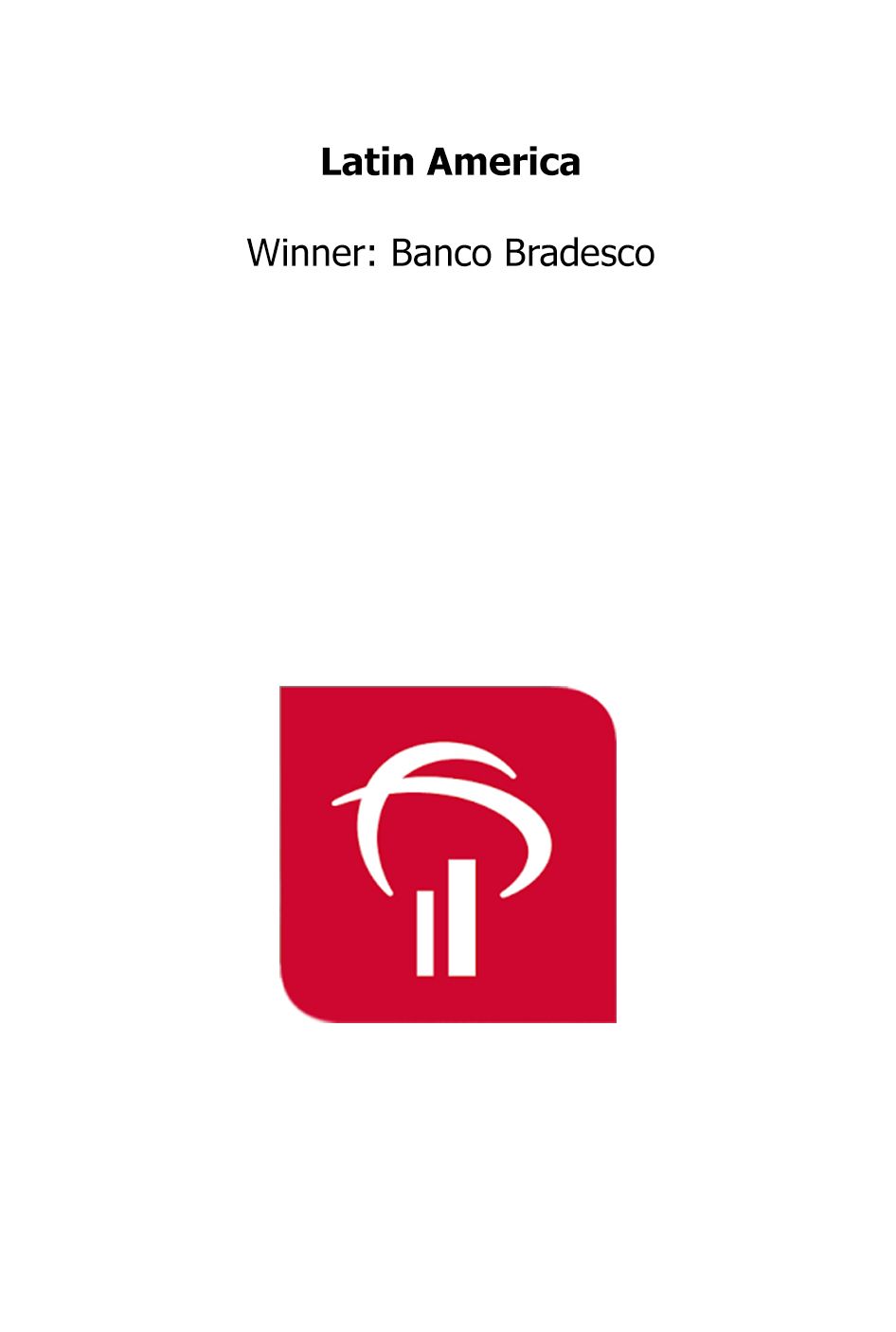
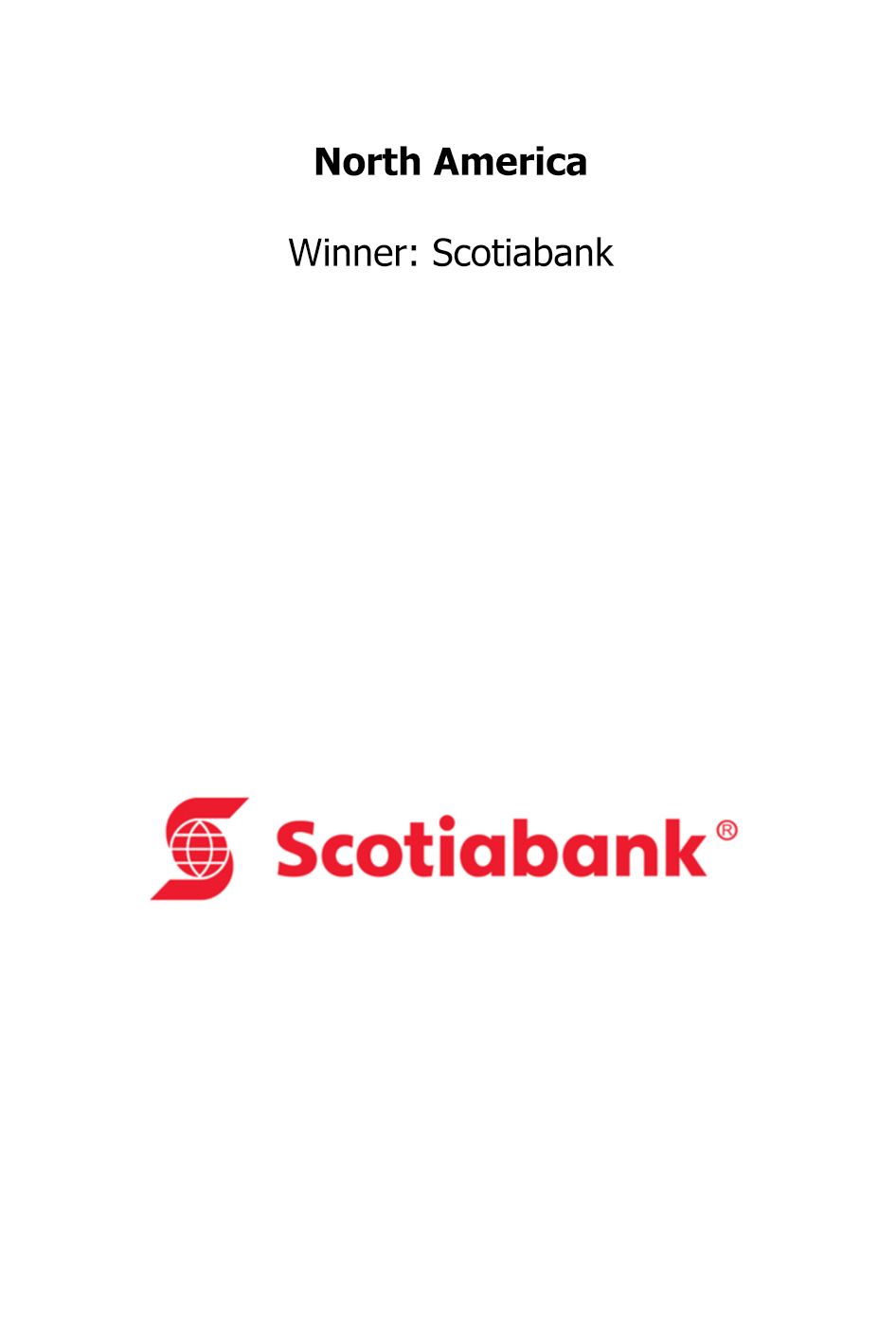


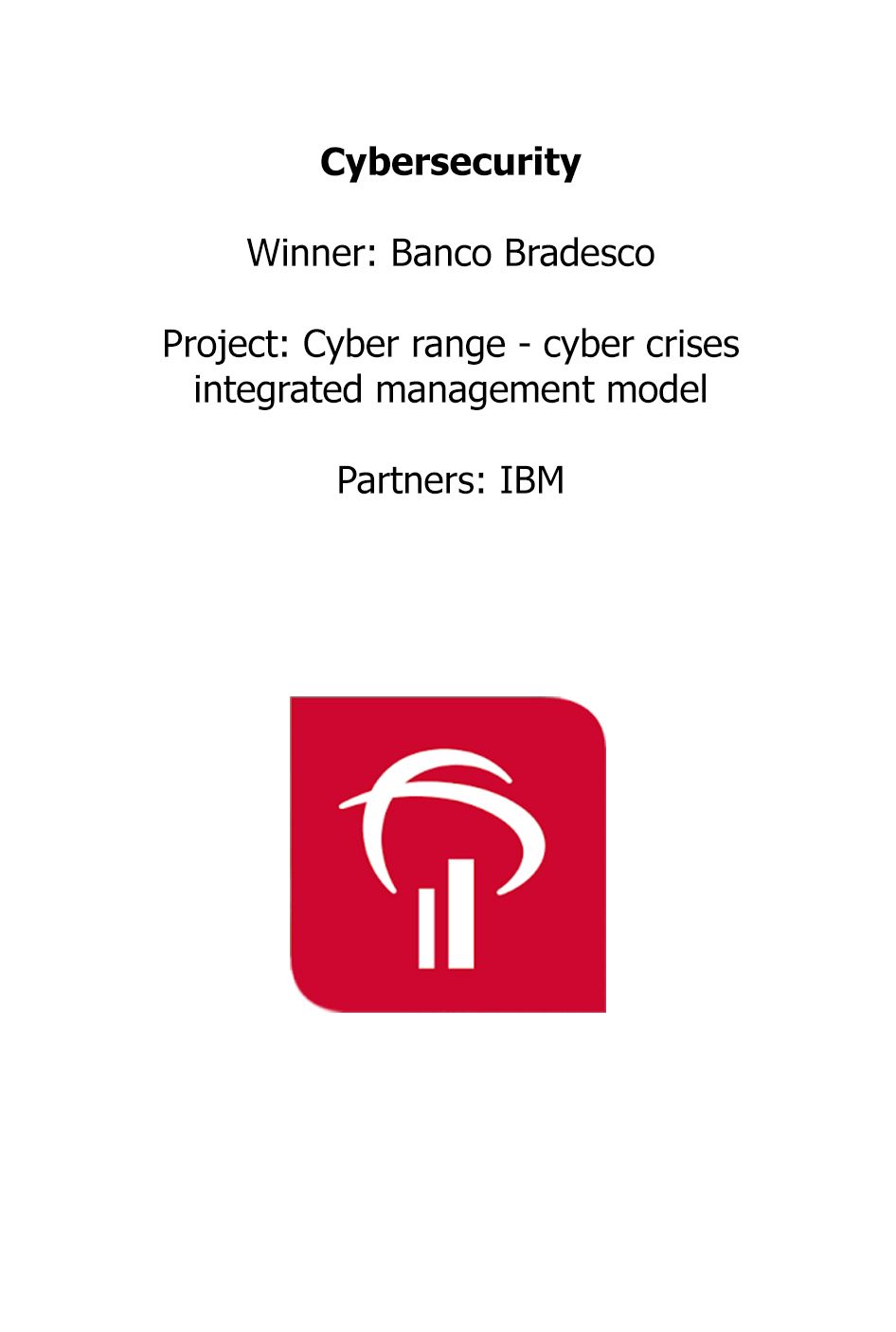

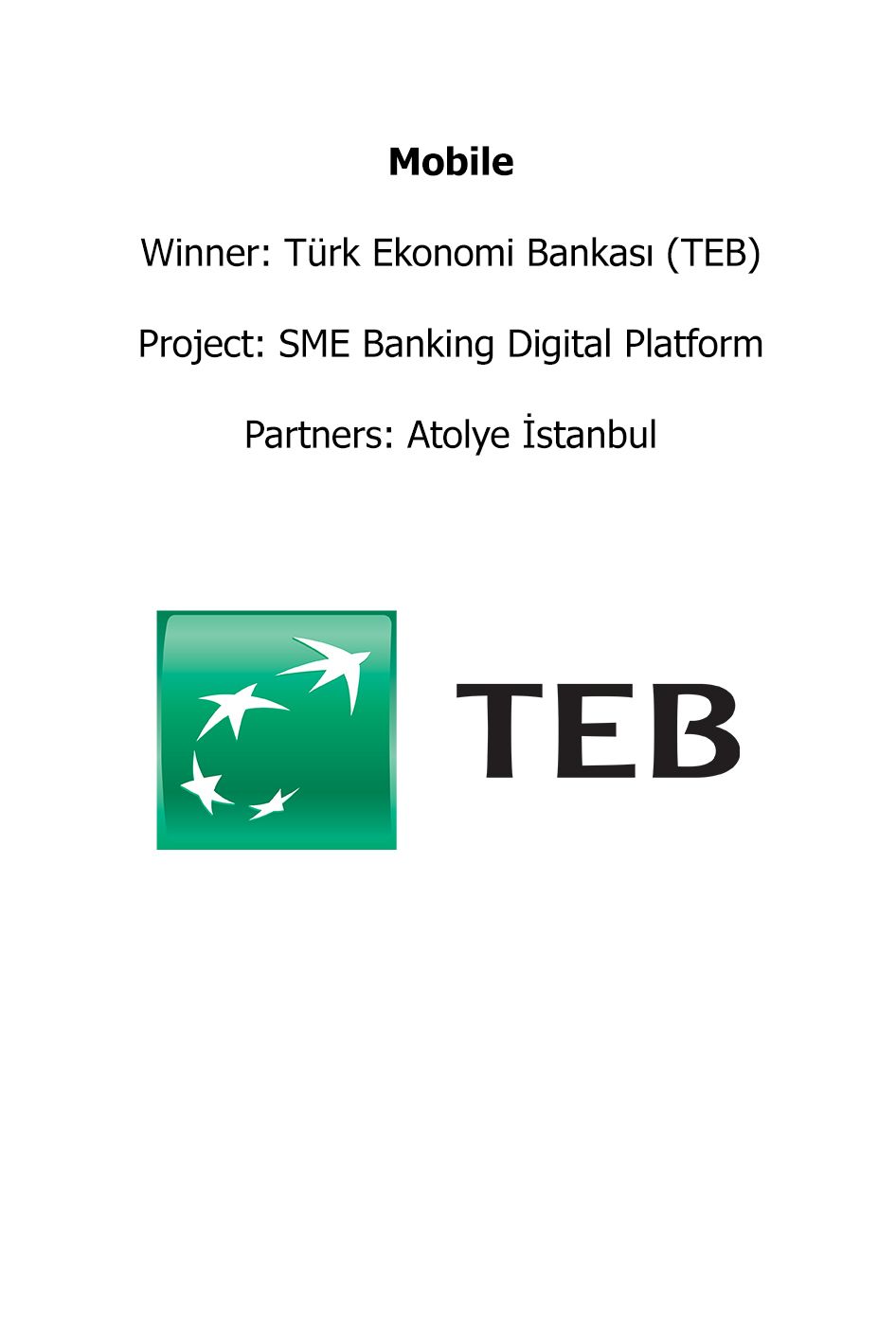



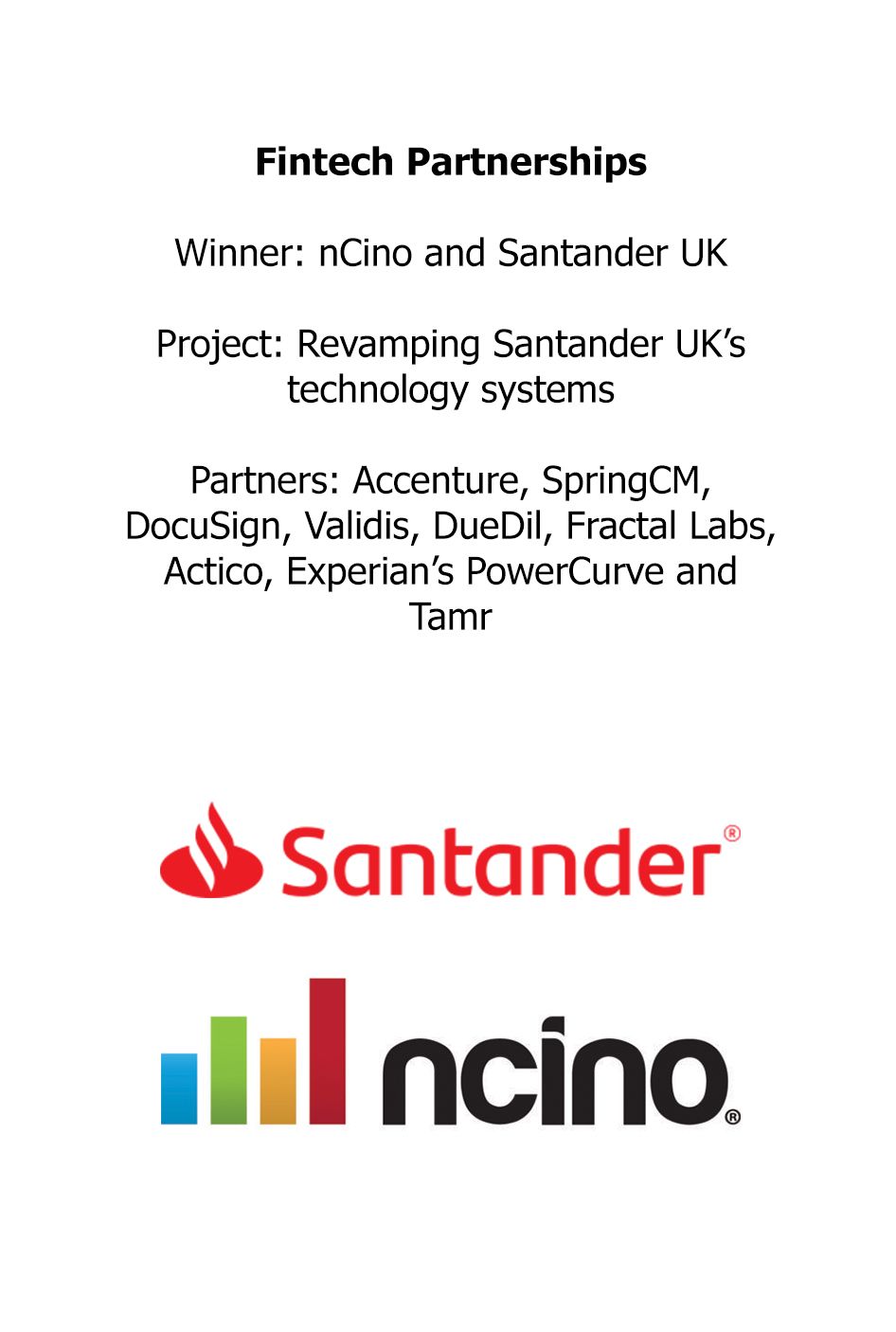
VIDEO

Stay ahead with unrivalled banking intelligence
· Gain deep insight from coverage of key global markets
· See trends, analysis, and comment from financial leaders and policymakers
· Access the world-renowned Top 1000 World Banks ranking
The Banker provides economic and financial intelligence for the world's financial sector and has built a reputation for objective and incisive reporting.
Register today: get 3 free views each month of the latest headlines and trends as well as our e-newsletters.
Visit TheBanker.com to find out more about our digital and print subscription options, contact our team on: +44(0)20 7873 4240 or email: thebanker@ft.com
